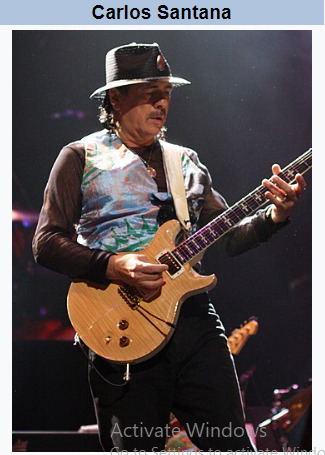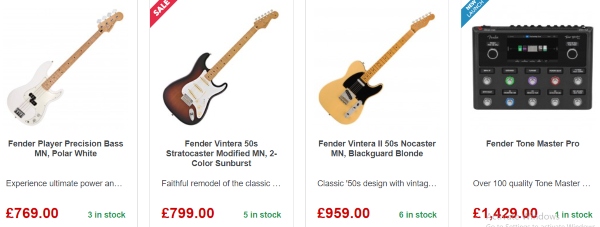Carlos Santana, a name synonymous with Latin rock, has carved out a distinctive niche in the world of guitar music. His unique blend of rock, blues, jazz, and Latin music has captivated audiences for decades. Santana’s guitar style is characterized by its emotive phrasing, sustained notes, and a distinctive tone that blends the rhythmic complexity of Latin music with the raw power of rock. In this article, we’ll delve into the key elements of Santana’s guitar style, his influences, and how you can incorporate some of his techniques into your own playing.
Early Influences and Development
Carlos Santana was born in Mexico in 1947 and was heavily influenced by his father, who was a mariachi violinist. This early exposure to traditional Latin music laid the foundation for his rhythmic sensibilities. As he grew older, Santana was drawn to blues and rock guitarists like B.B. King, T-Bone Walker, and Hank Marvin. These influences are evident in his bluesy phrasing and expressive bends.
Santana’s big break came with his performance at Woodstock in 1969, where his band’s electrifying set propelled them to international fame. The fusion of Afro-Latin rhythms, rock guitar, and jazz improvisation set Santana apart from his contemporaries.
Key Elements of Santana’s Guitar Style
1. Emotive Phrasing and Sustain:
Santana’s solos are known for their emotive quality. He often uses long, sustained notes that seem to sing, conveying deep emotion. This is achieved through his use of vibrato, controlled bends, and precise note selection.
Exercise: Practice sustaining a single note, applying subtle vibrato and bending it slightly to add expression. Use a clean tone with a touch of reverb and delay to emulate Santana’s sound.
2. Rhythmic Complexity:
The Latin influence in Santana’s playing is most evident in his rhythm work. He frequently incorporates syncopated rhythms and percussive elements into his solos and chord progressions.
Exercise: Learn basic Latin rhythms like the clave and try incorporating them into your playing. Practice strumming patterns that emphasize off-beats and syncopation.
3. Melodic Use of Modes:
Santana often employs modal scales, particularly the Dorian mode, to create his signature sound. The Dorian mode, with its raised sixth, provides a brighter, more uplifting sound compared to the natural minor scale.
Exercise: Practice the Dorian mode in different positions on the fretboard. For example, in the key of A, the A Dorian mode consists of the notes A, B, C, D, E, F#, and G. Try soloing over a simple chord progression using only these notes.
4. Smooth Legato and Slides:
Santana’s fluid legato technique and frequent use of slides add a smooth, connected feel to his playing. This creates a seamless flow between notes, enhancing the lyrical quality of his solos.
Exercise: Practice playing scales using hammer-ons and pull-offs, minimizing pick strokes. Work on sliding between notes instead of jumping, aiming for smooth transitions.
Signature Gear and Tone
Santana’s tone is as iconic as his playing style. He primarily uses PRS (Paul Reed Smith) guitars, known for their warm, rich sound. His amplification setup often includes Mesa/Boogie amps, which provide the sustain and overdrive that define his sound.
Tip: To emulate Santana’s tone, use a guitar with humbucking pickups for a fuller sound. Set your amp with a moderate amount of gain, a touch of reverb, and a slight delay. Adjust the EQ to emphasize the midrange frequencies.
Learning from Santana’s Iconic Solos
1. “Black Magic Woman”
This song features one of Santana’s most famous solos. It combines bluesy bends with Latin rhythms, showcasing his ability to blend genres seamlessly.
Exercise: Learn the solo note-for-note, paying attention to the phrasing and rhythmic placement of each note. Focus on replicating the emotion in Santana’s bends and vibrato.
2. “Europa (Earth’s Cry Heaven’s Smile)”
“Europa” is a masterclass in melodic soloing. The main theme is simple yet deeply expressive, with each note carefully chosen for maximum emotional impact.
Exercise: Play along with the track, starting with the main theme. Focus on matching the dynamics and expression in Santana’s playing. Experiment with your own phrasing once you’re comfortable with the original.
3. “Samba Pa Ti”
This instrumental track is a perfect example of Santana’s lyrical playing style. It features smooth legato lines, expressive bends, and a strong melodic sense.
Exercise: Transcribe the solo and practice it slowly, gradually building up speed. Pay close attention to the use of slides and legato techniques.
Incorporating Santana’s Style into Your Playing
1. Emphasize Melody Over Speed:
Santana’s solos are never about speed but about conveying emotion. Focus on playing melodically, choosing notes that resonate emotionally rather than trying to play as fast as possible.
Exercise: Write a solo using only eight notes, but make each note count. Use techniques like bending, vibrato, and dynamics to add expression.
2. Blend Genres:
Santana’s fusion of rock and Latin music is what makes his style unique. Don’t be afraid to blend different musical influences in your own playing.
Exercise: Take a simple rock riff and add a Latin rhythm to it. Experiment with different scales and modes to create a unique sound.
3. Develop Your Unique Voice:
Santana’s distinctive voice on the guitar is what sets him apart. Work on developing your unique sound by experimenting with different techniques, tones, and musical ideas.
Exercise: Spend time improvising daily. Record your sessions and listen back to identify elements that sound unique and personal. Refine these elements to develop your own style.
Conclusion
Carlos Santana’s guitar style is a rich tapestry of influences, blending the rhythmic complexity of Latin music with the expressive power of rock and blues. By studying his techniques and incorporating them into your own playing, you can develop a deeper understanding of both the technical and emotional aspects of guitar music. Remember, the key to playing like Santana is not just about the notes you play, but the feeling and expression you put into each note. Happy playing!





